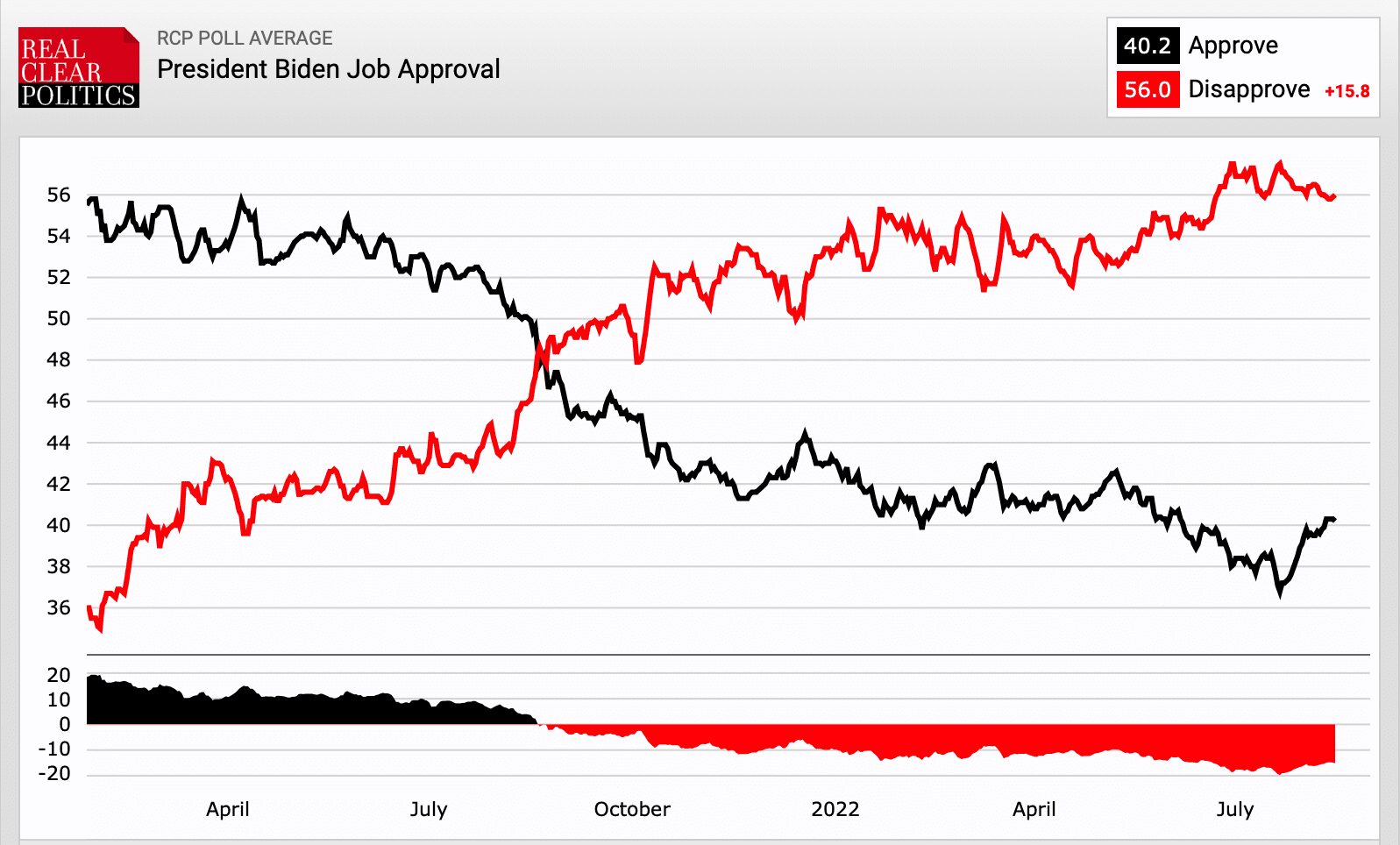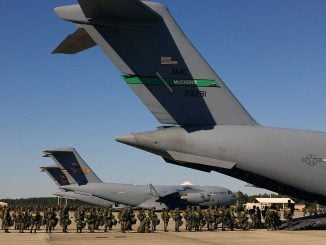Monday marked one year since the Taliban seized the Afghan capital of Kabul, signaling a swift transformation of a country the United States spent two decades and over $2 trillion attempting to make a functioning democracy.
Instead, Taliban fighters celebrated the anniversary by hoisting rifles, riding military vehicles through streets, and taunting the site of the former U.S. Embassy.
President Joe Biden and his administration seemed wholly unprepared for the moment.
Biden had insisted it was a scene that wouldn’t happen in the months leading up to the military withdrawal. In comments from the White House and in media appearances, he boasted of the work that had gone into training the Afghan army and praised then-Afghan president Ashraf Ghani. In excerpts from a July 23, 2021, phone call between the two leaders, Biden told Ghani he needed to “change perception” on the Taliban’s accelerating gains.
“You clearly have the best military,” he told Ghani on the call, as reported by Reuters. “You have 300,000 well-armed forces versus 70-80,000 and they’re clearly capable of fighting well.”
Days later, the Afghan military started folding across provincial capitals in the country with little fight against the Taliban, the news outlet said.
In news that would become emblematic of the problems ahead, U.S. troops left Bagram Air Base, its massive base in the country, without notifying the Afghans. Bagram also contained a prison where 5,000 Taliban fighters would soon be freed.
A BBC report stated, “The Americans left behind about 3.5 million items,” Afghan Gen. Asadullah Kohistani said, including tens of thousands of bottles of water, energy drinks and military ready-made meals, known as MREs. They also left behind thousands of civilian vehicles, without keys, and hundreds of armored vehicles.

The scenes witnessed by the world became increasingly dire in the run up to Aug. 15 as city after city fell to Taliban control. It was Kabul’s turn.
Thousands of Afghans rushed Kabul International Airport amid the chaos as it became clear the Taliban were going to assume full control of the country. Millions watched as the airport was nearly overrun with men, women and children, some of whom clung to U.S. military aircraft as they took off — knowing they were falling to their death.
Many of those left behind had worked with U.S. and NATO troops and were certain to face repercussions. Many former military members worked with members of Congress and other organizations to get interpreters and their families out of the country.
North Carolina Republican U.S. Sen. Thom Tillis collaborated with one such group, Save Our Allies, to get an interpreter who worked with the 82nd Airborne and his family out of the country and resettled them in the Union County town of Weddington. Save Our Allies says they’ve helped more than 12,000 Afghans escape. The group even received funding from the North Carolina state budget to advance their work.
Soon thereafter, another tragedy would strike.
On Aug. 28, 13 American military service members and 60 Afghans were killed during a suicide attack at the Kabul airport. The group ISIS-K claimed responsibility for the attack.
A minority report from the U.S. Senate Committee on Foreign Relations published in February 2022 laid the blame at the feet of Biden and his administration:
One of the most important roles of the U.S. government is for the protection of American citizens overseas. The Biden Administration failed to properly plan for an evacuation despite countless warning signs that a Taliban takeover was imminent. The U.S. government failed to even account for the number of people who would need to be evacuated, let alone for how this evacuation would occur.
The Biden Administration ignored numerous intelligence reports about the potential for a speedy Taliban takeover of Kabul, decided to abandon Bagram Air Base, disregarded dissent cables from the State Department (State), failed to plan an evacuation until it was too late, and in the process, abandoned tens of thousands of Afghan partners. The administration did not make a decision on evacuations from Afghanistan until a National Security Council Deputies Committee meeting on August 14, mere hours before the fall of Kabul.
When the decision to evacuate was belatedly made, the evacuation effort was severely hampered by the earlier decision to close Bagram Air Base. This air base would have improved the ability for evacuations to take place and its abandonment allowed for the release of thousands of extremists, including one who participated in the terrorist attack which killed 13 U.S. service members.
From August 15 to August 31, the United States completed its largest air evacuation. However, this evacuation was marred by a lack of planning, coordination, and communication. The United States failed to establish a clear system of how to contact evacuees and processes to allow them into the airport. The result left American citizens, U.S. legal permanent residents, and Afghan allies abandoned to the fate of the Taliban regime.
A defiant Biden turned to ABC News later in August 2021, sitting for a one-on-one interview about the evacuation and its impact. In the interview, he declined to acknowledge any mistakes.
“No, I don’t think it could have been handled in a way that, we’re gonna go back in hindsight and look — but the idea that somehow there’s a way to have gotten out without chaos ensuing, I don’t know how that happens. I don’t know how that happens,” Biden said.
ABC News also said Biden “grew defensive” when asked about those images of Afghans falling from U.S. military aircraft.
It was on Aug. 31, 2021, that the military mission officially ended.
“The United States ended 20 years of war in Afghanistan — the longest war in American history,” Biden said. “We completed one of the biggest airlifts in history, with more than 120,000 people evacuated to safety. That number is more than double what most experts thought were possible. No nation — no nation has ever done anything like it in all of history. Only the United States had the capacity and the will and the ability to do it, and we did it today. The extraordinary success of this mission was due to the incredible skill, bravery, and selfless courage of the United States military and our diplomats and intelligence professionals.”
In later months, the military intelligence failures would continue to mount.
A drone strike intended for ISIS-K apparently missed its target, killing a humanitarian worker and seven children.
And in the leadup to Russia’s war in Ukraine, the Biden administration that was confident in the abilities of the former Afghan president instead offered a plane to Ukraine’s president Volodymyr Zelenskyy, who refused and rallied his nation and much of the world to his side in the ongoing struggle.
Politically, Biden’s own job approval went underwater a week after the fall of Kabul.

Prior to mid-August 2021, he was in the low 50s, somewhat normal for most presidents. Since then, however, it dropped to under 50 and currently is in the low 40s.
Facing the loss of one or both houses of Congress in the November midterms, Biden’s political standing has Democrats searching for alternatives in 2024.
But for those still in Afghanistan, they’ve lost much more.



